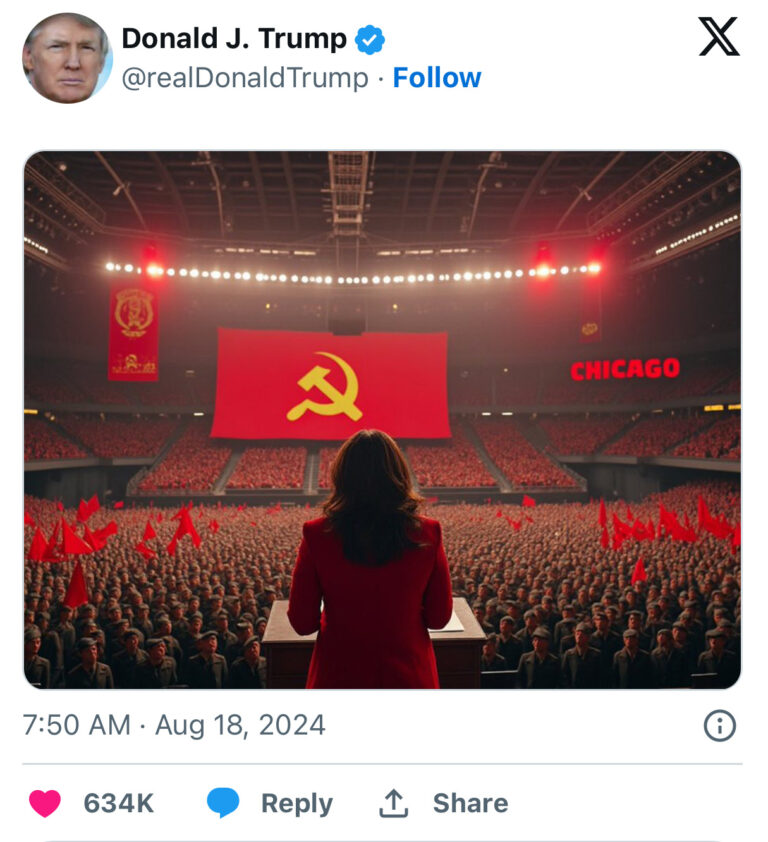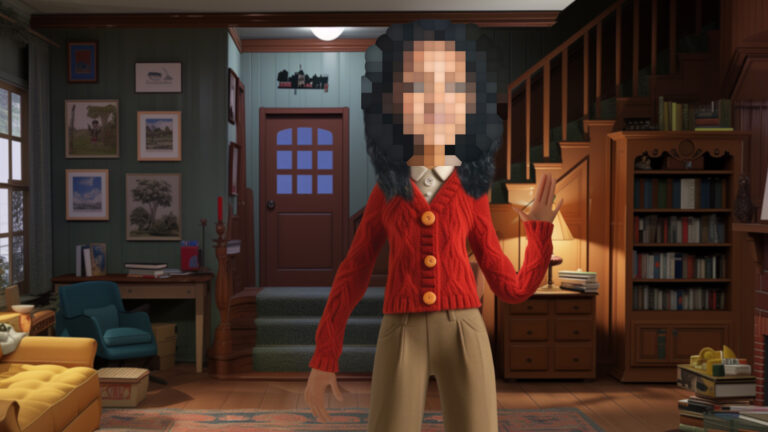Our AI update on the brink of the General Election
In February last year, I wrote a post titled, The AI Revolution is Here—How COMPETE is adjusting to our new robot overlords. At the time, AI images and text were a new and fun toy that everyone was excited to play around with but also a little scared and skeptical of.
In the past eighteen months, AI seemingly has taken over everything, from services and operating systems for Google, Apple, and Microsoft, to household appliances and even electric-powered shoes. AI has become an acronym that increasingly means everything and nothing. News regularly debates if AI is something to be feared or something silly and flawed.

Both sides are correct. In May 2024, OpenAI had a shakeup that saw their chief scientist, Ilya Sutskever, resign due to disagreements with the business side, led by Sam Altman. Ilya was largely thought of as the one working to make AI safe, and his departure was concerning to onlookers. Soon after, OpenAI released their new model, GPT-4o, with significant improvements and an uncanny resemblance to the product in the movie Her.
It would be foolish to think I could summarize all of the advancements and news in one single post, so instead, I will highlight some notable advancements, concerns, and detail how COMPETE is using AI in our day-to-day work.
What’s New With AI in 2024?
It’s worth noting that, despite the tremendous gains, our current AI models have not crossed over into AGI, or artificial general intelligence. Current AI solutions could more accurately be described as machine learning or large language models, while AGI implies consciousness and reasoning. It is debatable whether AGI will happen in six months, ten years, or ever. Whether or not we reach AGI, it’s clear that AI is here to stay and will continue to improve its text, image, and video generation in the coming years.
Of course, the legal implications of companies training their models on artists’ and creators’ work are still a major topic and point of concern. Take this answer from Microsoft’s AI boss Mustafa Suleyman, when asked whether “AI companies have effectively stolen the world’s IP”:
“I think that with respect to content that’s already on the open web, the social contract of that content since the ‘90s has been that it is fair use. Anyone can copy it, recreate with it, reproduce with it. That has been “freeware,” if you like, that’s been the understanding.”
Artists, of course, disagree. OpenAI’s CTO Mira Murati was caught in a meme-worthy moment of forgetfulness when asked by Joanna Stern at Wall Street Journal if their new video creation tool, Sora, scraped YouTube content.
“I’m actually not sure about that.”
It’s preposterous to think the CTO of that product wouldn’t know the answer to that question, and YouTube has come out saying if it did, it would be against its terms.
Even privacy-focused Apple has been caught scraping data for its new Apple Intelligence systems.
Notable Trump supporter Elon Musk’s X platform has recently rolled out an AI chatbot and image generator called Grok that has no guardrails regarding copyright or human likenesses, with disturbing results.

Other competitors, such as Midjourney, have blocked the generation of images of Trump, Biden, and Harris on their platforms.
The entire industry is clearly in flux and evolving rapidly, and regulation is far behind.
AI Images are getting better and better
In my February 2023 post, I shared an example of a Midjourney image created with the prompt: “Realistic photograph of a diverse group of people smiling outside of a voting booth”. The result had promise but was not great:

Running the exact same prompt today yields a much better result which would fool most people, but still has odd artifacts and is easy to spot as AI to the trained eye.

Both images could be improved with more work and additional prompts, but the evolution in one year is significant. It’s also worth noting that new AI models have improved greatly when it comes to rendering human hands, so the “six-finger test” is no longer a safe way to spot generated images.
AI Video Content is Coming
In February of 2023, AI-generated video was a nascent industry. The results were silly (the most famous being an AI video of Will Smith eating spaghetti), but eerily similar to the earliest AI images. If AI video follows the same trajectory as imagery, it’s easy to believe that it will be a widely used tool in the future.
There are a handful of intriguing AI video generation products on the market, none more intriguing than OpenAI’s Sora.
At the time of this writing, Sora is still not open to the public, and time will tell its impact on video creation, but if the sample videos on their site are accurate, I believe it will be large. Last month, Toys ‘R Us released a trailer with assets largely made by AI using Sora, with compositing and finishing work by human artists.
Other Advancements in AI
It seems that every creative endeavor is being touched by AI in some form, and two more that I would like to mention are AI voiceovers and music.
AI voices are common in TikTok and Instagram, and have a distinctively robotic sound to them. However, new products can realistically mimic human voices. Artlist’s new speech generation tools allow users to select a voice style and create a track that would easily fool most people.
Similarly, AI tools have been used to release “new” songs by famous recording artists, which has caused concern in the music industry.
Drake – Heart On My Sleeve (Audio) ft. The Weeknd, Future, 21 Savage (unleashed)
How AI is Being Used in Politics
Americans largely believe that AI will be used to spread election disinformation, but spotting it can be a challenge.
This brings us to two big questions: How is AI currently being used in political campaigns, and what is COMPETE’s policy on using it in our work?
It should go without saying, but we will not use AI to create deep fakes of politicians or resurrect individuals to endorse candidates as some Republican candidates have already done.
Looking at Twitter and Meta platforms, AI content is everywhere, generated by users on both sides of the political aisle. Most are easy to spot if you know what to look for, but judging by the replies and retweets on the platforms, it appears that many people are fooled. Microsoft has warned about deepfake attacks during the DNC.
As far as directly spreading and sharing AI content, the Harris/Walz campaign has not yet shared or spread generated content. The same can not be said for Trump, who makes false claims that Kamala Harris AI’d her crowds and regularly shares AI imagery on Truth Social.

On August 18, Donald Trump also accepted a false nomination from Taylor Swift.

It is unclear if the former president actually believes that Taylor Swift endorsed him.
How COMPETE is Using AI
In February 2023, I wrote:
“Presently, COMPETE is using AI to assist in generating text for social media posts and emails, with heavy human involvement.”
This remains true. Chat GPT is a valuable tool for assisting in writing, though it is not a replacement for human involvement. Where it excels is proofreading, and creating alternate versions of human-written text.
We have also used AI image generation to create unusual assets for videos, as long as they are not using a human likeness and are not intended to fool a viewer. This Mister Rogers’ inspired video used generated assets for the background and clothing:

In addition, we have used Photoshop’s new image generation tools to expand backgrounds in order to fit images for the final assets needed. Below is an example of a candidate photo that we needed to be a bit wider and taller. Using Generative Fill, we were able to easily expand it in a way that wouldn’t have been possible a year ago.

We have also found voice cloning software useful for instances where wind or background noises distract from the take. We will not use it to put other words into the speaker’s mouth, only to redo the take. This intro video for Jennifer Boysko uses eleven AI cloned words to patch over audio issues due to wind. So far, no one has correctly guessed which eleven words are cloned. See if you can hear them (click the image below):
Our view of AI is that it is a helpful tool when used responsibly, but should never be used to fake a person’s likeness, put words in their mouth, or spread disinformation.
Where Do We Go From Here?
Looking forward, it’s clear that AI will continue to evolve and improve, and be used in more media. Politicians, particularly ones without a sense of right and wrong, will delight in sharing it to sew confusion.
In addition, search engines will continue to deliver AI based results, which could drastically change the the market for content-based sites and Search Engine Optimization services.
Short of the smartphone, it’s difficult to find a new technology that has evolved as AI rapidly with the potential to change the world, for either good or bad. It will be exciting and frightening to watch.
Also, Taylor Swift would never endorse Donald Trump.

